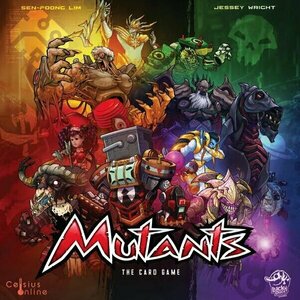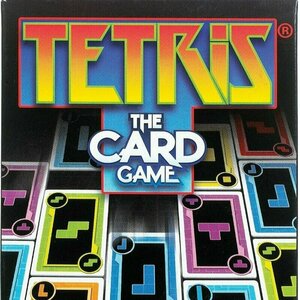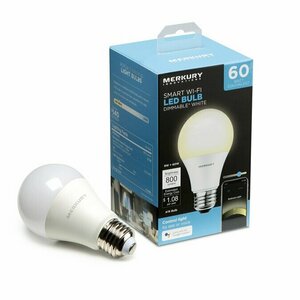
The Quest Classic Gold
Games and Entertainment
App
* For new players we recommend The Quest! * You can now have The Quest Classic, Island of Ice and...

Pandora Music
Music
App
Pandora is the easiest way to find new music based on your favorites. Pandora gives you a...

A Magical High School Girl
Games
App
The magic, it calls to you. Get ready for an epic roguelike dungeon crawler where you get to make...
Purple Phoenix Games (2266 KP) rated Fossilis in Tabletop Games
Feb 17, 2021
Fossilis is a game of set collection and tile placement in which players are working to excavate and collect sets of dinosaur bones for display in museums across the world. To setup for a game, prepare the dig site as described in the rulebook. Populate the Score Track board with 9 random Skill tokens, 3 face-down randomly selected Event cards, and a Plaster pool based on the player count. Create a Market of Tool and Supply cards, as well as a Dinosaur Display. Each player receives a mat, Paleontologist meeple, and score marker in their chosen color. Pick a starting player, and in reverse turn order, players place their Paleontologists onto a corner tile of the dig site. The game is now ready to begin!
Every players’ turn has 3 steps: Actions, Market, and Lab. At the start of your turn, you have 4 Energy to spend on Actions. The available action choices are: Gain 1 Plaster (from the Plaster pool), Move up to 2 spaces (orthogonally or diagonally), Climb onto the Dig Site (if your Paleontologist was knocked off the board), Place 1 Sand tile (anywhere on the Dig Site), Dig 1 tile (slide a terrain tile 1 space in any direction), or Extract (excavate a bone/hammer). With the exception of Digging, all other Actions cost 1 Energy to perform. Digging 1 tile costs energy dependent on the type of terrain tile being moved. To dig Sand is 1 Energy, Clay is 2, and Stone is 3. To Dig, you select 1 tile that is orthogonally adjacent to your Paleontologist, and slide it 1 space in any direction you wish. Tiles that are pushed off the edge are claimed by that player, and can be used to purchase cards from the Market. It is possible for a Paleontologist to be pushed off the Dig Site, so watch out! To perform the Extract action, you will excavate a bone or hammer from an open pit orthogonally adjacent to your Paleontologist. Extraction costs Plaster dependent on the type of bone being collected. For example, extracting a tooth costs 2 Plaster, while a skull costs 6. Extracting hammers has no cost, and you immediately trade the hammer for one of the available Skill tokens in play. The Skill tokens provide benefits for the remainder of the game. Once a player has spent their Energy, they move to the next phase.
On your turn, you may buy 1 card from the Market: either a Tool or Supply card. These are purchased using the icons on any tiles you collected during the Action phase. Supply cards gain you immediate resources, while Tool cards are saved for use during a future Action step. After the Market phase is the Lab phase. You may claim a Dinosaur from the Display if you have at least one of the required bones for that Dinosaur. You can only ever have 1 Dinosaur in your Lab at a time, so strategize carefully. At any point during a turn, you can score the Dinosaur in your lab – either for full points if all required bones are present on the card, or partial points if you only have some of the required bones.
Events are triggered 3 times throughout the game when the Plaster pool has been depleted. The active player draws the top Event card, and follows the instructions on the card. Once an Event has been performed, the Plaster pool is refilled and play continues with the next player. After the 3rd event has been triggered, the Plaster pool is refilled one last time. When the last Plaster pool is depleted for this final time, the game ends. Players count up all their points, and the player with the highest score wins!
At first it may seem overwhelming, like there is a lot going on, but after a couple of turns the gameplay feels intuitive and streamlined. There are quite a few aspects to keep track of, but the overall flow of the game makes it feel clear and concise. During my plays, I have never once felt lost or confused as to what the next turn step is. The tight gameplay also lends itself to providing a variety of strategic options for players. Do you want to go for all the highest-scoring Dinosaurs, even though their bones take longer to collect? Or maybe you want to snag as many lower-scoring Dinosaurs as possible, since they should be faster to collect. You can earn end-game points based on Characteristic sets of Dinosaurs (carnivorous, herbivore, etc), so maybe you decide to focus on those sets. Or if you’re in a particularly confrontational mood, maybe you want to knock opposing Paleontologists off the Dig Site, causing them to ‘waste’ an Energy on a future turn just to climb back on into the play area. There really is no right answer as to what strategy is a sure-win, and I like that I can choose and adapt my strategies based on the current standings in the game.
Probably my favorite innovative mechanic in Fossilis is the 3D terrain and ‘digging’ actions. When setting up the game, bones and hammers are randomly scattered and distributed around the Dig Site before terrain tiles are added. So there is absolutely no way to know where you should dig for what you want! Just like a real paleontologist, you’ve got to give it your best guess. I have had some frustrating turns, spending lots of Energy to dig a tile just to find the space to be empty! Or maybe you dig and hit the motherlode, which just means you’ll probably have to fight off other paleontologists for the bones that you need. The 3D board adds another element of strategy that heightens the gameplay and makes it more immersive.
Let’s touch on components for a moment. They are AWESOME. Admittedly, I have the Kickstarter version, but I just love how well-produced this game is. The terrain tiles are nice and thick bakelite-esque tiles, and they are just dang fun to manipulate. The plaster and bones are small, but pretty detailed and sturdy for their size. The artwork on the cards is colorful and clear, the Paleontologist meeples are cute little wooden bits, and the cardboard bits are all good quality. Excellent production quality all around.
It should come as no surprise, based on my score, that I love this game. The gameplay is immersive and engaging, the mechanics add a neat twist to your normal set collection/tile placement game, and the ability to adapt strategy on the fly means that nobody is truly out of the game because of one bad turn. Purple Phoenix Games gives Fossilis a roaring 11 / 12. If you’re looking for a good dinosaur game, look no further. Yeah, they’re technically just bones here, but it still counts!
Purple Phoenix Games (2266 KP) rated Tetris: The Card Game in Tabletop Games
Jul 2, 2020
Tetris: The Card Game is a game of hand management and pattern recognition in which players are racing to be the first to earn 10 points. Setup is simple – shuffle the entire deck of cards, and deal 10 to each player. The cards are double-sided, with one side depicting a Tetris Matrix, and the other depicting a specific Tetromino. Arrange your cards in a 2×5 grid, with the Tetromino side facing up. This grid will act as your personal scoring track. Place the remaining cards, Matrix-side up, in a draw deck in the center of the table. Deal 1 additional card to each player, to go in hand, and the game is ready to begin! You will be using your hand of cards, Tetromino side, to complete the Matrix side of the top card of the draw deck.
A round of play is pretty straight-forward: draw one card, play one card. At the start of your turn, draw the top card from the draw deck. This will reveal a new Matrix on the next card of the draw pile. Choose one of your two cards in hand to complete at least 1 row in the revealed Matrix. Play the card, showing your opponents how it would fit into the Matrix, and score points. You score 1 point per row completed, so if your piece completes 2 rows, you would score 2 points. To track your points, you flip over cards in your 2×5 grid to their Matrix sides, to represent your scored points. If on your turn, you are unable to complete a Matrix line with either of your cards in hand, you must discard one card, and are also penalized by having to forfeit one of your earned points, flipping that card back to its Tetromino side. There are also a handful of Special cards that can be used to manipulate play, whether Reversing the play direction, or forcing a player to lose a point, and that adds a new little twist to the game. The game ends when one player has scored all 10 points and is declared the winner!
Probably the best things about Tetris: The Card Game, is that it is so simple to learn and play. The simplicity brings back the nostalgia of the original game to the extreme. It’s a super light game that can be used as a filler/palate cleanser between bigger games, or just as a game to toss on the table when you’ve got 5 free minutes. Another added bonus of its simplicity is that it is pretty friendly for younger/newer gamers. Looking to get your young’uns into the hobby, or just spreading some happiness with friends and colleagues? This is a good introductory game that is light-hearted, although not a complete brain burner.
Now, on the flip side, there are some drawbacks to this game. The first and biggest being that it is entirely based upon the luck of the draw. There is pretty much no strategy involved, because you are at the mercy of the draw deck. You really can’t set up a game strategy that can be adapted throughout a play because the game is so dependent upon luck. Depending on the current Matrix in play, certain Tetrominos could not be used at all to complete a row, so you end up having to burn a turn (and losing a point) to discard a card. And then you have to hope for the best next turn. Another drawback of this version of Tetris is the hand limit of 2 cards. That severely limits your options each turn, and can turn the game from light-hearted to frustrating because of a lack of choices. This hand limit also limits any strategic options. Certain Matrices can only be completed by certain Tetrominos, so unless you have those in hand, you’re stuck wasting a turn. The Special cards included in the game add a twist to the gameplay, but are a little too ‘take that’ for my taste. But without them, there is no player interaction at all. So it’s kind of a lose-lose situation for me in that regard.
Ultimately, I would say that the OG Tetris is still king. This game attempts to encompass the atmosphere and enjoyability of the video game, but it just falls flat for me. It is too dependent upon luck, and doesn’t offer enough strategic choices for players, so it ends up feeling bland and unengaging. Am I happy with this game? Honestly, no. But playing this with the right group of people could still result in some entertainment and good times. If luck-based games are your thing, then definitely consider this game. But if not, let OG Tetris be your go-to game to fulfill your tile-dropping, row-completing urges. Purple Phoenix Games gives Tetris: The Card Game a blocky 4 / 12.
Charlie Cobra Reviews (1840 KP) rated Smart Wi-Fi LED Light Bulb in Tech
Sep 19, 2021
So the other day I was at my grandmother's house with my Dad. The family has been doing some renovations over there and I saw my Aunt messing with a lamp and her phone. She told me she had bought one of those smart light bulbs and that she could use an app on her phone to control it. I have seen commercials for different similar products like the smart A/C thermostat and thought it was pretty cool. So I decided next time I was at the store to have a look at them and see if there was something affordable and not too expensive to give it a try and that's how I found this product.
This is my first time buying a smart bulb so I didn't really know what to expect. Inside the box was just the light bulb and instructions. The instructions didn't seem to complicated, download the "geeni" app, create an account and password, login and then setup the bulb. There were 3 ways to setup the bulb, bluetooth, easy mode and backup AP mode. I was doing it by bluetooth but somehow wound up not being able to get it. So then I tried easy mode and still wasn't able to get it and that's when I saw the small print that says, "Note: Geeni can't connect to 5GHz networks." Once I connected to the right network everything went smoothly.
In the app on the "My Home" tab, it shows you which light bulbs you have connected. If they are off it will show a message that says "device offline". If on it will show an on/off button and will also show a "Quick Actions" link where you can control the brightness from 1% - 100%. via dimmer. The next tab in the app is the "Smart Scenes" tab, under the Tap-to-Run page you can control multiple devices with one tap or with voice assistance like Amazon Alexa, Google Assistant or Microsoft Cortana. On the Automation page you can execute actions automatically, and setup them up by specifications based on weather conditions, device status or time. The next tab is the "Notification Center", and there are pages for Alarms, Home, and Alerts. The last tab is the "Profile" tab and is where you can set your name, find the help center, the settings tab and manage your home so you can organize your light bulbs by house hold.
Pro:
Easily turn on/off light bulb anywhere you have wi-fi through app.
Control light bulb by voice using Alexa, Google assistant or Cortana.
Set light bulb to automatic conditions like weather, time, or device status.
Con:
Will sometimes go back to setup mode where it just keeps flashing and you have to connect or setup again.
You have to have the switch turned on for it to be online or else you cannot turn the bulb on/off through app.
Confusing packaging.
Rating: 7/10
Conclusion:
I have to say that these light bulbs can be pretty convenient and an awesome way to setup some lights at home to turn on when it's dark to make people think you're home. It's also good for when you are getting home at night and want to turn on the lights so you don't walk into a pitch dark room. It's awesome to just use the app to dim the lights without having to get up or even turn them off when your sitting down about to watch a movie. When I purchased them there was a 3-pack that was more expensive then buying 3 bulbs separately and I couldn't understand why. In retrospect I think maybe those were non-dimmable which really doesn't make sense. So I would say shopping for light bulbs is already confusing enough and getting a smart bulb might just cause more headaches for some people. But if you're looking to try it out I got this bulb for under $10 at Wal-Mart and think they are pretty cool. I give the Merkury Innovations Smart Wi-Fi- LED bulb a 7/10.
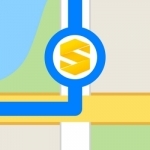
GPS Navigation by Scout (Sat Nav - INT)
Navigation and Travel
App
PREMIUM NAVIGATION & MAPS. GLOBAL MAPS INCLUDING ONE ENTIRE COUNTRY FOR OFFLINE USE. NOW ALSO WITH...
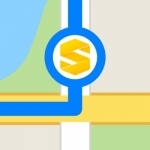
GPS Navigation by Scout (Sat Nav - AUS)
Navigation and Travel
App
PREMIUM NAVIGATION & MAPS. GLOBAL MAPS INCLUDING ONE ENTIRE COUNTRY FOR OFFLINE USE. NOW ALSO WITH...

